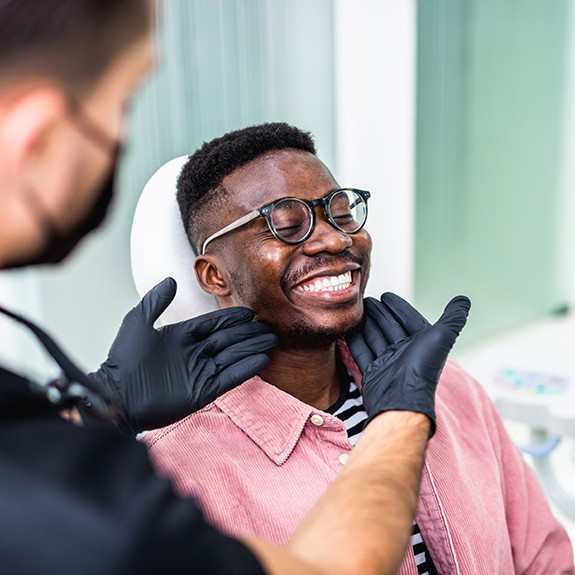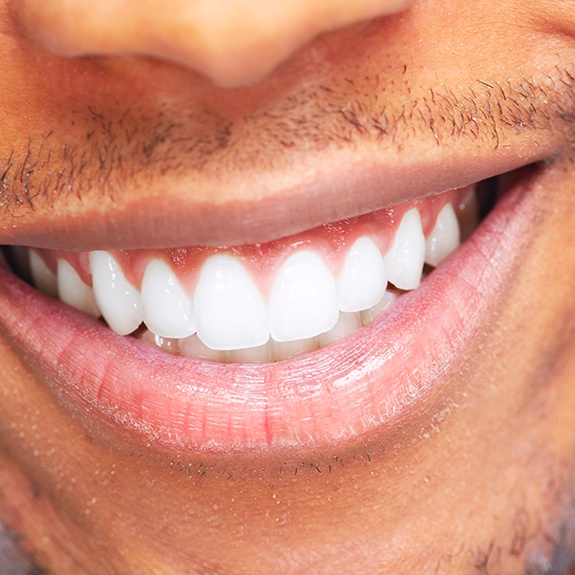Information?

Tooth discoloration is a natural part of aging, but it’s still one of the most common reasons why people are self-conscious of their smiles. If you feel that your pearly whites have become dull and yellowed, we offer at-home teeth whitening kits that can turn this around. After just a couple of weeks of using your treatment as direction, you can give your smile back its shine! Give us a call to learn more and schedule your consultation!


Tooth discoloration can be caused by various factors, including aging, poor oral hygiene, tobacco use, pigmented beverages, sugary/acidic foods, medications, and genetic factors. Some types of discoloration can be prevented with excellent hygiene habits, but others are completely out of your control.
There are two types of stains, extrinsic and intrinsic. Extrinsic stains occur on the surface of the teeth and are usually caused by food, beverages, and tobacco products. Intrinsic stains, on the other hand, are the result of medications so you should discuss this with your doctor if it is something that bothers you.

If you opt for at-home teeth whitening, we will begin by thoroughly examining your smile to ensure that you don’t have any existing oral health issues that could be aggravated with teeth whitening. Then, we will provide you with a kit containing custom trays that you will fill with a whitening solution and wear every day as instructed. After just a couple of weeks, you will see beautiful results.

The results of your treatment will last much longer if you take the time to maintain them. Here are some tips to help:

Although professional teeth whitening treatment is an incredibly effective and convenient way to upgrade your smile, it’s important to know how much you’ll pay for the process. Not only will you want to know how they compare with other products, but it’s also a good idea to understand the kind of investment you’ll be making in your pearly whites by considering the factors surrounding the cost of the treatment. Here’s what you should know about the price of teeth whitening.

In most cases, this cosmetic dental service will come with a fixed cost. However, several factors can impact how many sessions you might need to accomplish the look you want, such as:

There are several kinds of teeth whitening processes, each of which has its unique price range. Here are some of the general costs that you can expect from the different types of treatments:

While store-bought teeth whitening products might come with a lower price compared to professional teeth whitening, it’s very important to consider the quality of your results. Over-the-counter gels or strips often provide lackluster results that might require multiple applications to achieve your desired results, which can increase how much you pay in the end. Professional teeth whitening is specifically tailored for your smile, and the bleaching solution is much safer and more powerful, offering dazzling results by using materials that are safe for your gums.

Remember that most cosmetic dental treatments will not receive coverage from dental insurance companies, including teeth whitening treatment. The good news is that this isn’t the only way to minimize your out-of-pocket expenses! Our team offers an in-house dental plan that can give patients significant discounts on all types of treatments, including cosmetic dentistry, for only a low annual fee. You can also consider signing up for CareCredit financing, which turns the total cost of your treatment into monthly payments that come with little to no interest!
Whatever rumors or gossip you’ve heard, you can rest easily; teeth whitening doesn’t hurt. The treatment process shouldn’t cause any aches or pains for its patients.
Note that dentists tailor teeth whitening to each specific patient. Given this fact, treatment is much less likely to cause tooth sensitivity than over-the-counter methods are. You can trust your dental team to only give you the needed amount of bleaching gel, all without going “overboard.” They’d also ensure the applied gel doesn’t spill over or irritate your gums.
Of course, please tell the dental team if your teeth are prone to sensitivity. They can help you avoid aches by spacing out your treatments, suggesting specialty toothpaste, etc.
Teeth whitening is a very safe dental treatment, as it doesn’t harm your teeth, gums, or any other parts of your mouth. It enhances your smile’s looks without affecting your health.
You see, dentists always take precautions with teeth whitening. They make sure their smile-brightening products are vetted, well-tested, and approved by both the FDA and ADA. That way, they can ensure your treatment won’t cause any short or long-term health problems.
Such things can’t be said about over-the-counter whitening. Unlike pro treatment, it doesn’t adjust the percentage of bleaching gel used on your teeth. It also doesn’t provide custom trays that keep the gel from spreading to your gums. Due to these and similar issues, it can often harm your tooth enamel.
While the exact timing can vary, at-home teeth whitening usually takes a few weeks to work. You’ll only start to notice major results toward the end of that period.
You see, the at-home method uses a less intense bleaching gel. That means a patient must wear its gel-infused trays over their teeth for many days. Only after two weeks will the gel have removed many of your tooth stains, brightening your grin by several shades.
Given the facts above, you should get treatment weeks before major events. Doing so would ensure your smile is white and gleaming by the time any photos need to be taken.
Unfortunately, no – dental crowns can’t be whitened like natural teeth can. The caps aren’t affected by the professional whitening process.
It comes down to how whitening works in the first place. To remove your tooth stains, treatment applies bleaching gel that seeps into your enamel through pores. Dental crowns have no pores, so the gel can’t penetrate the caps’ inner layers.
With all that said, patients can still work around this problem. You could keep your crowns from discoloring by avoiding bad oral habits (i.e., smoking, drinking dark-colored liquids, etc.) Similarly, it’s also possible to replace a poorly shaded crown with one that better suits you.
